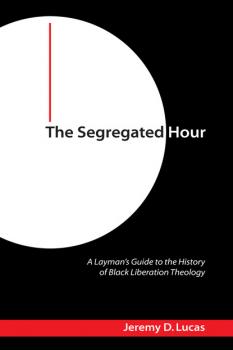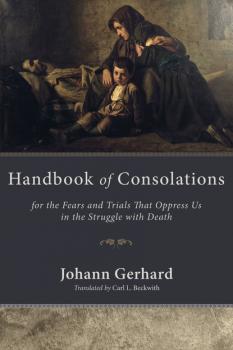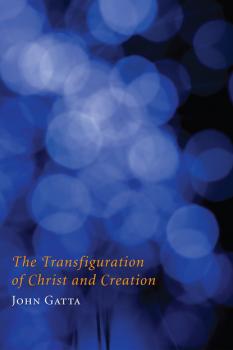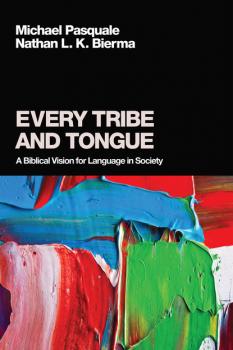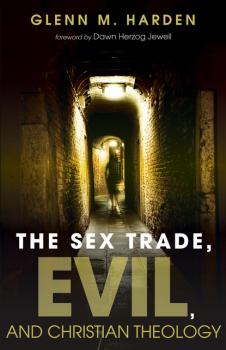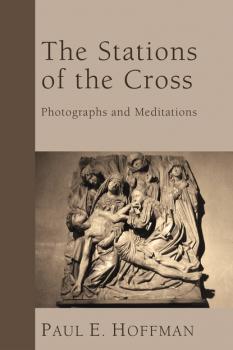ТОП просматриваемых книг сайта:
Словари
Различные книги в жанре Словари, доступные для чтения и скачиванияАннотация
On March 18, 2008, as Barack Obama rose to the stage in Philadelphia, political commentators were on pins and needles over how he was going to address the fiery sermons of his long-time friend and mentor, the Reverend Jeremiah Wright. With an eye toward a more perfect union, the soon-to-be president offered his initial thoughts on the current state of race relations in America. «The fact that so many people are surprised to hear that anger in some of Reverend Wright's sermons simply reminds us of the old truism that the most segregated hour in American life occurs on Sunday morning.»
Soon after the Civil Rights Movement came to an end, James Cone had been the first to write of this «old truism» when he introduced the world to something he called Black Liberation Theology. Centuries of slavery, discrimination, and violence had stained the canvas of America's racial divide, but laws now required the immediate and full integration of public life. For those still angered by past and present oppression, there was only one place of refuge where the government would not intrude: the black church. Cone became their primary theologian.
Rarely seen in small towns and rural fellowships, black liberation has been relegated to the inner city neighborhoods where the poor reach out for anyone who will give them hope for a better tomorrow. Whether the preachers of liberation have been truly held accountable for the accuracy of their message is the subject of great controversy, but there can be no productive dialogue over such matters until those who would cast judgment first acknowledge the honest and often tragic history that has created this most segregated hour of American life.
Soon after the Civil Rights Movement came to an end, James Cone had been the first to write of this «old truism» when he introduced the world to something he called Black Liberation Theology. Centuries of slavery, discrimination, and violence had stained the canvas of America's racial divide, but laws now required the immediate and full integration of public life. For those still angered by past and present oppression, there was only one place of refuge where the government would not intrude: the black church. Cone became their primary theologian.
Rarely seen in small towns and rural fellowships, black liberation has been relegated to the inner city neighborhoods where the poor reach out for anyone who will give them hope for a better tomorrow. Whether the preachers of liberation have been truly held accountable for the accuracy of their message is the subject of great controversy, but there can be no productive dialogue over such matters until those who would cast judgment first acknowledge the honest and often tragic history that has created this most segregated hour of American life.
Аннотация
America in God's World argues that human injustice in social-policy areas such as security, economy, and ecology can be traced to defective theology/ethics abroad in the land. Renewing biblical theology and ethics, and finding new ways to appropriate this wisdom into public policy, can bring renewal to our national life and help heal and reconcile our troubled world.
Аннотация
How can a God of love also be a God of judgment? If God loves everyone, what is the point of judgment? Does God change from being wrathful in the Old Testament to loving in the New Testament? Can we discern God's judgments in current events, such as hurricanes and personal tragedies? Is it ever right for humans to judge? These are not just daunting issues for theologians to ponder. They are urgent questions for everyone. Our answers profoundly affect how we relate to God and how we live with one another. Coming to grips with these issues is vital for our spiritual journeys.
Many people today emphasize God's love and downplay his judgment. The problem with this approach is that God's judgment is taught in Scripture from the beginning of Genesis to the end of Revelation, and it is a core part of the gospel preached by Jesus and his apostles. There are problems at the other end of the spectrum too, when we believe in a God of judgment who is not also a God of love. It is impossible for us to find spiritual peace when we live in constant dread of God, pictured as a harsh judge whom we can never please. This book calls us to embrace a more full, biblical image of God–one that joins his love and judgment together. Additionally, the book shows that, as those who are made in God's image, we can fuse love and judgment together constructively in our own daily lives.
Many people today emphasize God's love and downplay his judgment. The problem with this approach is that God's judgment is taught in Scripture from the beginning of Genesis to the end of Revelation, and it is a core part of the gospel preached by Jesus and his apostles. There are problems at the other end of the spectrum too, when we believe in a God of judgment who is not also a God of love. It is impossible for us to find spiritual peace when we live in constant dread of God, pictured as a harsh judge whom we can never please. This book calls us to embrace a more full, biblical image of God–one that joins his love and judgment together. Additionally, the book shows that, as those who are made in God's image, we can fuse love and judgment together constructively in our own daily lives.
Аннотация
Johann Gerhard (1582-1637) was one of the leading dogmatic theologians of his time and was the authoritative voice of seventeenth-century Lutheran Orthodoxy. Yet, he also published numerous devotional works and meditations that were meant to be used in the daily lives of ordinary believers. The Handbook of Consolations sought to provide comfort and encouragement not only to those approaching death, but also to those who provided care for the sick and dying. Gerhard himself was no stranger to sickness and death, having lost his infant son and young wife, and faced numerous life-threatening illnesses throughout his life.
In this pastoral work, which is the first complete English translation based on Gerhard's original Latin to be published since the seventeenth century, Gerhard brings together his extensive understanding of Scripture, theology, and church history in a practical and easy-to-understand manual that is as relevant and meaningful in the twenty-first century as it was in Gerhard's day.
In this pastoral work, which is the first complete English translation based on Gerhard's original Latin to be published since the seventeenth century, Gerhard brings together his extensive understanding of Scripture, theology, and church history in a practical and easy-to-understand manual that is as relevant and meaningful in the twenty-first century as it was in Gerhard's day.
Аннотация
The biblical story of Jesus' Transfiguration «on a high mountain» bristles with meanings germane to present-day concerns and spiritual longings. Together with its later artistic representations, this episode from the synoptic gospels seizes the imagination as an icon of mystical hope, beauty, and possibility. What might such an iconic episode, long honored liturgically in the Eastern church, disclose not only about Jesus, but also about the prospect of seeing our human nature transformed? And as interpreted by Christian tradition since the patristic era, what might it tell us about the worth of envisioning not just a conservation or preservation of natural resources but a transfiguration of all creation, and about how this «feast of beauty» could re-energize current discussions of Christianity's relation to environmental attitudes and policy? Such questions are addressed in this book through an original blend of personal reflection with commentary on relevant theological and scriptural texts, literary works, music, and art.
Аннотация
Every Tribe and Tongue offers a way, first, to rediscover biblical stories and principles that relate to questions about immigration and societal multilingualism, and, second, to outline possible ways to guide thoughtful engagement in the discourse of the «public square» based on the biblical witness. We will try to show that, far from being an afterthought in the Bible, the call to love our neighbors and to gather people of every nation together in the worship of God is at the very core of the gospel message.
Two powerful passions animate this book from beginning to end. First, this work is saturated in a deeply rooted love of the diversity of human languages that are one of God's gracious gifts to human beings. Second, this book is dedicated to calling the North American church to take seriously its charge not simply to love the «stranger and alien» but to live as «strangers and aliens» within the American nation to which it has been called to witness to Jesus Christ.
Two powerful passions animate this book from beginning to end. First, this work is saturated in a deeply rooted love of the diversity of human languages that are one of God's gracious gifts to human beings. Second, this book is dedicated to calling the North American church to take seriously its charge not simply to love the «stranger and alien» but to live as «strangers and aliens» within the American nation to which it has been called to witness to Jesus Christ.
Аннотация
This volume is dedicated to Marvin C. Meyer, a person of passionate spirit and personality, known to many as the preeminent scholar who brought to life the Gnostic Gospels. Meyer made ancient discoveries relevant to our lives: from his work with National Geographic, informing thousands, to the time he spent with individual students, opening their eyes to the mystery and meaning of a Coptic text. Friends, students, and scholars here pay tribute to Meyer with reflections, new pedagogies, and explorations in biblical texts, ancient magic, and archaeological discoveries.
Аннотация
As a scholar and an activist, Glenn Harden seeks a theology of hope that can sustain opposition to evil. Looking into the face of evil without blinking, he uses the sex trade as an example of how horrendous evil can be. But he also uncovers stories of radical healing which are problematic for those who deny either God or the resurrection. This book is for those people of faith who walk in dark places and need deeper theological sustenance to sustain their journey.
Аннотация
With simple narrative and lovely pictures, this inspiring devotional resource follows Christ on his final journey to the cross. Through it, the ancient rite of the stations finds a post-modern expression that is both fresh and poignant. Supplemented with Scriptural texts, this accessible set of devotions brings the wonder and mystery of Christ's compassion into the everyday lives of contemporary readers. The Stations of the Cross is an excellent resource for Lenten studies, individual devotional use, sermon preparation, or parish planning. The inclusion of Hoffman's own photos of the ten stations from churches and cathedrals in Western Europe adds an extra element of wonder, mystery, and awe.
Аннотация
The goal of this book is to define and explain the archetypal pattern of redemption that underlies our whole notion of resolution in literature and to demonstrate, through multiple examples, that successful literature–poems and stories that have shown endurance or popularity–uses this pattern in specific ways. This theory should help readers to interpret both particular works of literature and the general notion of literature.
The pattern of redemption employed here, in its ideal form, involves the sacrifice of an innocent redeemer to save something that has been lost. Because this pattern of redemption is typically associated with Christianity, this book can be taken as proposing a Christian theory of criticism. Current textbooks on literary criticism and theory cover a range of perspectives, such as Marxism, feminism, multiculturalism, reader response, and queer theory, but they invariably ignore the field of Christian criticism. Therefore, this book may be most useful as a supplementary text for courses in literary criticism that might include a Christian perspective.
At the same time, however, the terms and methodology proposed here are not exclusive to or dependant on Christian beliefs, so readers of all types may find this approach useful. The greatest strength of this book is its application of the theory to numerous examples from a wide range of genres and periods of literature, testing the theory on classical and Shakespearean works such as the Iliad and Odyssey, Hamlet and Coriolanus; best sellers such as The Lord of the Rings, Le Petit Prince, Valley of the Dolls, and Harry Potter and the Deathly Hallows; horror stories such as Frankenstein; postcolonial novels such as Things Fall Apart and The Kite Runner; and lyric poems. Consequently, even readers who are skeptical of the assumptions used here should find the many concrete examples thought-provoking.
The pattern of redemption employed here, in its ideal form, involves the sacrifice of an innocent redeemer to save something that has been lost. Because this pattern of redemption is typically associated with Christianity, this book can be taken as proposing a Christian theory of criticism. Current textbooks on literary criticism and theory cover a range of perspectives, such as Marxism, feminism, multiculturalism, reader response, and queer theory, but they invariably ignore the field of Christian criticism. Therefore, this book may be most useful as a supplementary text for courses in literary criticism that might include a Christian perspective.
At the same time, however, the terms and methodology proposed here are not exclusive to or dependant on Christian beliefs, so readers of all types may find this approach useful. The greatest strength of this book is its application of the theory to numerous examples from a wide range of genres and periods of literature, testing the theory on classical and Shakespearean works such as the Iliad and Odyssey, Hamlet and Coriolanus; best sellers such as The Lord of the Rings, Le Petit Prince, Valley of the Dolls, and Harry Potter and the Deathly Hallows; horror stories such as Frankenstein; postcolonial novels such as Things Fall Apart and The Kite Runner; and lyric poems. Consequently, even readers who are skeptical of the assumptions used here should find the many concrete examples thought-provoking.

